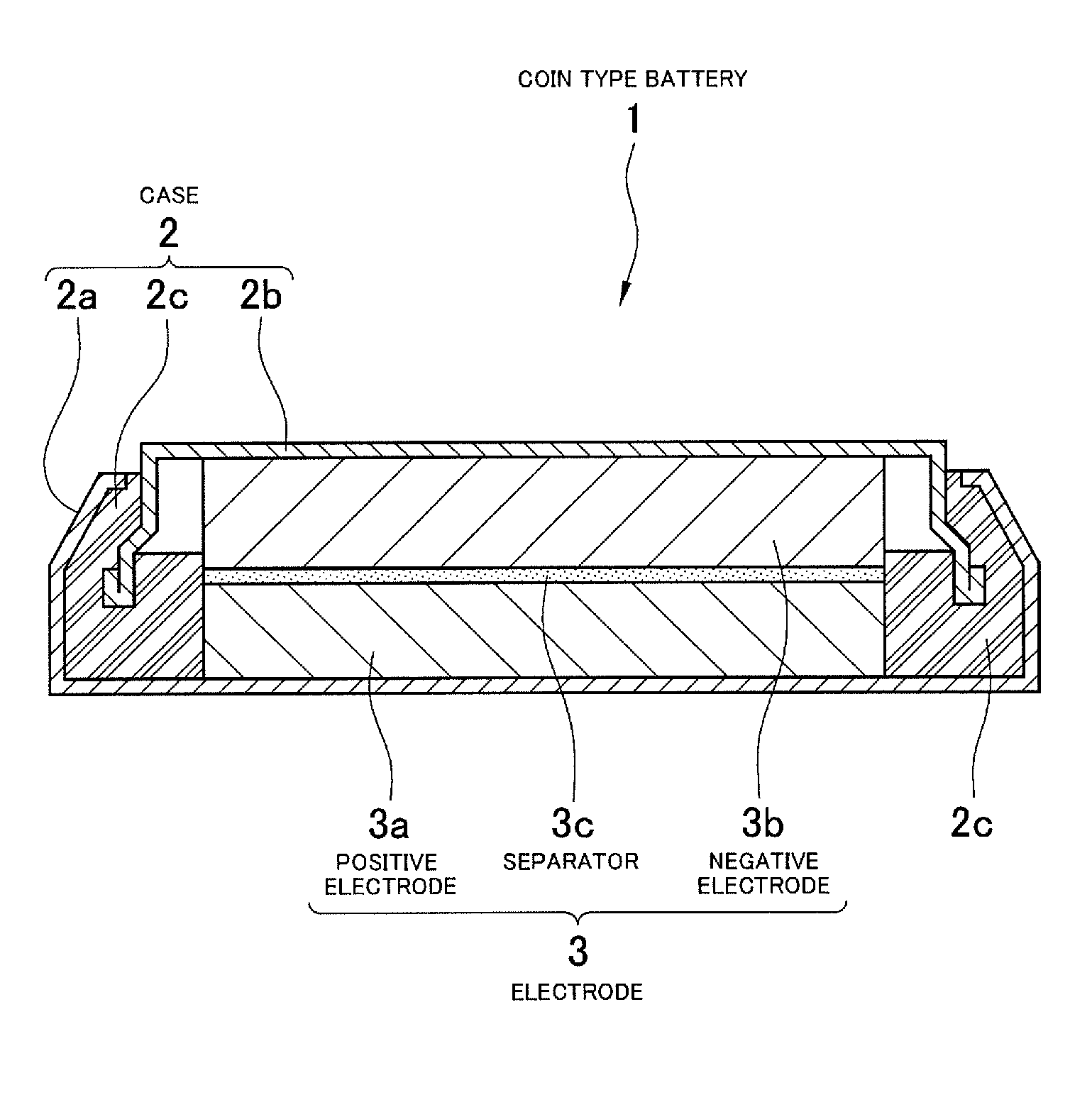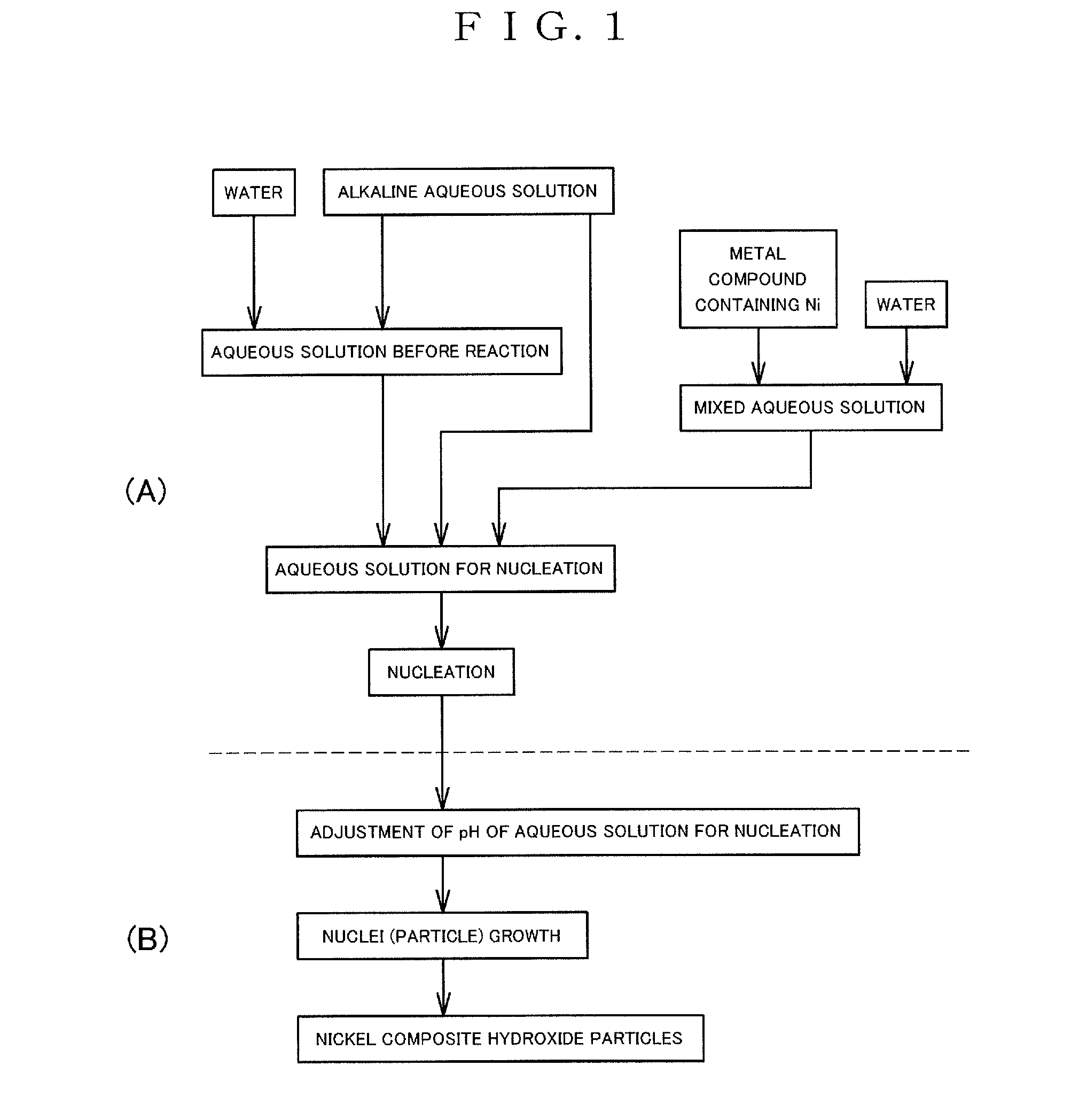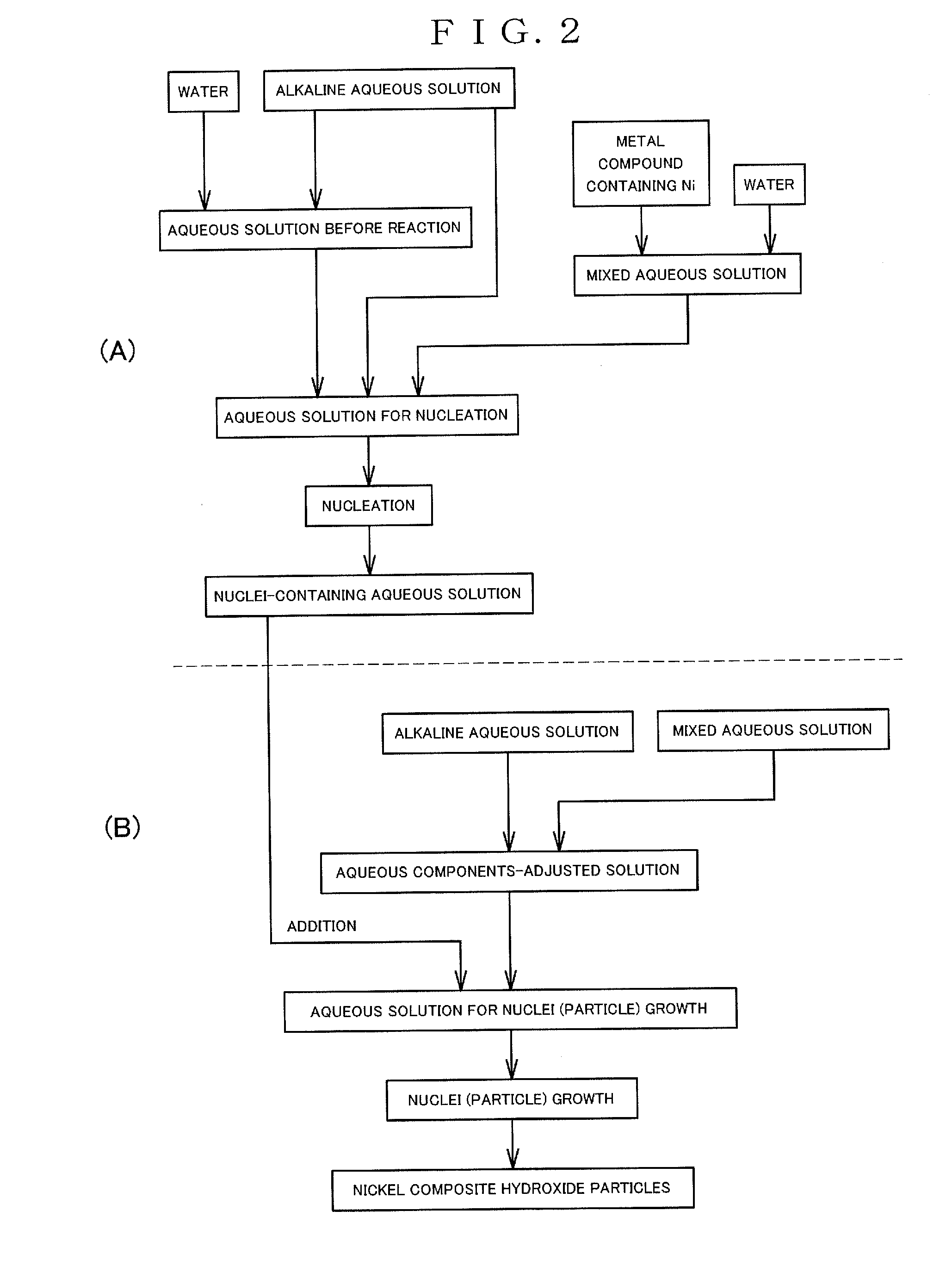Nickel composite hydroxide particles and nonaqueous electrolyte secondary battery
a technology of composite hydroxide particles and secondary batteries, which is applied in the direction of nickel compounds, cell components, sustainable manufacturing/processing, etc., can solve the problems of reducing the battery capacity, increasing the reaction resistance and failure, and reducing the reaction resistance, so as to facilitate the formation of platy primary particles, reduce precipitation rate, and increase particle density
- Summary
- Abstract
- Description
- Claims
- Application Information
AI Technical Summary
Benefits of technology
Problems solved by technology
Method used
Image
Examples
example 1
(Step of Producing Composite Hydroxide)
[0243]A composite hydroxide was prepared using the method of the present invention as in the following.
[0244]A reaction vessel of 34 L was first filled half full of water. Thereafter, while stirring the water, a temperature in the vessel was set to 70° C., and nitrogen gas was introduced into the reaction vessel to form a nitrogen atmosphere. At that time, a concentration of oxygen in the space of the reaction vessel was 2.0% by volume.
[0245]A 25% aqueous sodium hydroxide solution was appropriately added to water in the reaction vessel, and an aqueous solution before the reaction in the vessel was adjusted to have a pH of 12.6 in terms of pH as measured at a liquid temperature of 25° C. as a standard.
(Nucleation Step)
[0246]Next, nickel sulfate and cobalt sulfate were dissolved in water to form a 1.8 mol / L mixed aqueous solution. In this mixed aqueous solution, a molar ratio of each metal element was adjusted to be Ni:Co=0.76:0.14.
[0247]The mixe...
example 2
[0263]A cathode active material for a nonaqueous electrolyte secondary battery was obtained in a similar manner to Example 1 except that after the calcinating, the lithium mixture was washed with water and mixed with water so as to adjust concentration of the slurry to 1000 g / L followed by stirring, and thereafter filtered and dried. Performances of the obtained cathode active material for a nonaqueous electrolyte secondary battery were evaluated in a similar manner to Example 1.
[0264]A chemical analysis of the obtained hollow cathode active material verified a composition containing Li of 7.27% by mass, Ni of 46.7% by mass, Co of 8.87% by mass and Al of 2.89% by mass, indicating to be Li0.994Ni0.76Co0.14Al0.10O2. A powder X-ray diffraction of the obtained cathode active material verified that the material had a single phase of a hexagonal layered crystal lithium-nickel-cobalt composite oxide.
example 3
[0265]A cathode active material for a nonaqueous electrolyte secondary battery was obtained in a similar manner to Example 1 except that titanium oxide powder was mixed such that a molar ratio of the metal elements in terms of Ni:Co:Al:Ti became 0.756:0.139:0.100:0.005 in the step of producing the composite hydroxide. Performances of the obtained cathode active material for a nonaqueous electrolyte secondary battery were evaluated in a similar manner to Example 1. In the obtained composite hydroxide particle, a central portion having primary particles with a particle diameter thereof of 0.05 μm and an outer shell portion having primary particles with a particle diameter thereof of 0.8 μm were observed and a thickness of the outer shell portion was 1.2 μm.
[0266]A chemical analysis of the obtained hollow cathode active material verified a composition containing Li of 7.58% by mass, Ni of 45.7% by mass, Co of 8.30% by mass, Al of 2.86% by mass and Ti of 0.25% by mass, indicating to be ...
PUM
| Property | Measurement | Unit |
|---|---|---|
| temperature | aaaaa | aaaaa |
| temperature | aaaaa | aaaaa |
| average particle diameter | aaaaa | aaaaa |
Abstract
Description
Claims
Application Information
 Login to View More
Login to View More - R&D
- Intellectual Property
- Life Sciences
- Materials
- Tech Scout
- Unparalleled Data Quality
- Higher Quality Content
- 60% Fewer Hallucinations
Browse by: Latest US Patents, China's latest patents, Technical Efficacy Thesaurus, Application Domain, Technology Topic, Popular Technical Reports.
© 2025 PatSnap. All rights reserved.Legal|Privacy policy|Modern Slavery Act Transparency Statement|Sitemap|About US| Contact US: help@patsnap.com



